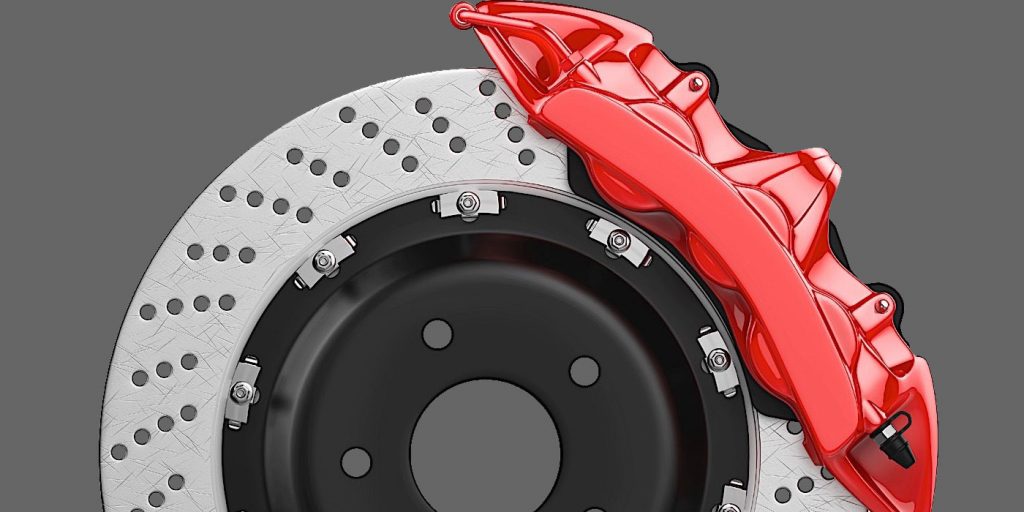Brake upgrades are often the most underrated modifications. Stage-one upgrades can include more aggressive brake pads and drilled rotors. Stage-two upgrades to the brakes can include new calipers with four or six pistons.
Multi-piston calipers found on high-performance vehicles, including many import cars, need special attention during a brake job. Multi-piston calipers can installed to upgrade stock brake systems for cosmetic and performance reasons. The more moving parts that are used to stop the car means the greater the chance that a small problem in a system can lead to bigger problems. But, they can lead to additional sales opportunities.
Aftermarket performance brake kits typically include four- or six-piston fixed calipers that replace the stock calipers, rotors with the same or larger diameter, new performance pads (typically some type of semi-metallic or ceramic formula), new braided stainless-steel front brake hoses and new caliper mounts (if required). Big brake kits also include brackets so the new caliper mounts to the existing bolt holes in the knuckle.
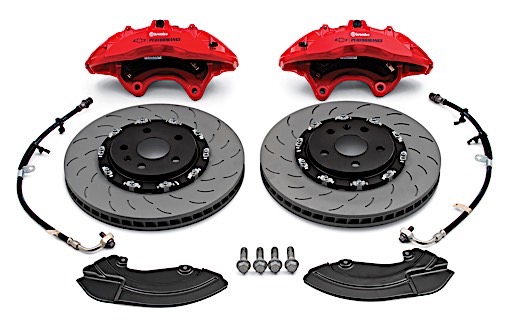
Most aftermarket performance brake kits use multi-piston calipers instead of single-piston or dual-piston calipers in order to multiply brake force. The amount of clamping force the caliper can apply to squeeze the pads against the rotor depends on the surface area of the caliper piston and the amount of force generated by the master cylinder. If hydraulic pressure from the master cylinder remains consistent, then increasing the surface area of the piston by using more than one piston will increase the braking force.
Another reason for using multi-piston calipers is to reduce pad flex for better clamping effectiveness and braking friction. If a caliper has a single, large piston and a relatively short pad, pad flex is usually not an issue. But if a caliper has longer pads (to increase the friction surface area), applying pressure only in the middle of the pad with one piston may cause the ends of the pads to bow up slightly, with the most force being applied in the middle. So to ensure the full length of the pad contacts the rotor, two or more pistons are used to more evenly distribute the clamping force along the entire length of the pad.
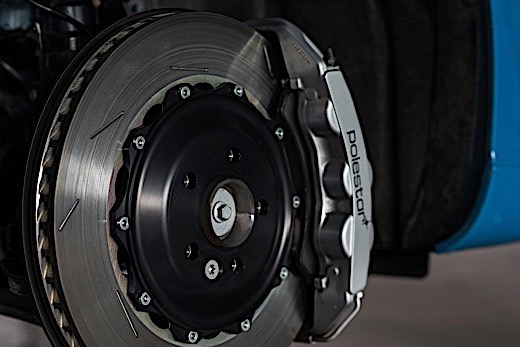
To even out clamping force, some multi-piston performance calipers use different-sized pistons; typically smaller diameter pistons on the leading edge of the caliper and larger pistons behind it.
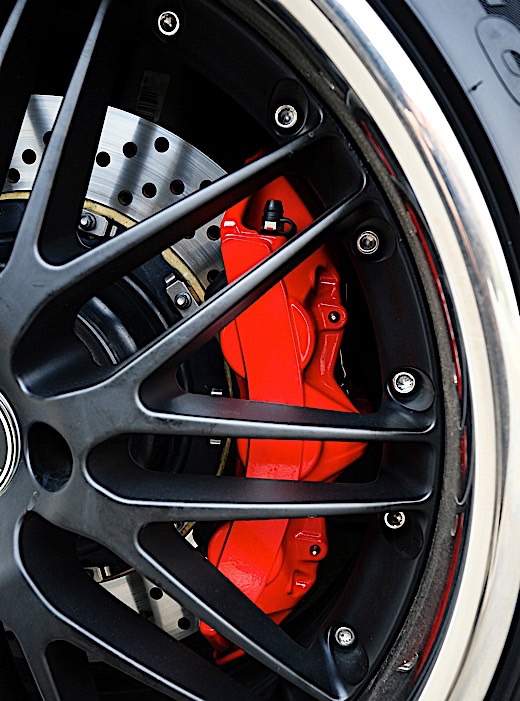
Most aftermarket performance calipers are aluminum rather than cast iron and come powder-coated in a variety of bright colors. Some are also available with a clear anodized coating or are bright plated to resist corrosion and enhance their appearance. Installing a set of brightly colored calipers will certainly dress-up the appearance of any vehicle and enhance the look of the brakes behind open-spoke alloy wheels.
Most of the aftermarket performance brake kits use fixed calipers rather than floating calipers. This is done so the calipers can squeeze the pads evenly from both sides. But this requires changing the caliper mounts and carefully aligning the calipers to the rotors when they are installed so the pads wear evenly. If a fixed caliper is not perfectly parallel to its rotor, the front and rear edges of the pads will not wear evenly.
Other Upgrade Considerations
How can you tell if your customer is a likely prospect for brake upgrades? Those who tend to go through brakes rather quickly because of their driving habits, those who own sporty or performance import makes and especially those who have already replaced their stock wheels with larger diameter aftermarket alloy wheels and low-profile tires may already know they need to upgrade their brake components but just don’t know what to ask for.
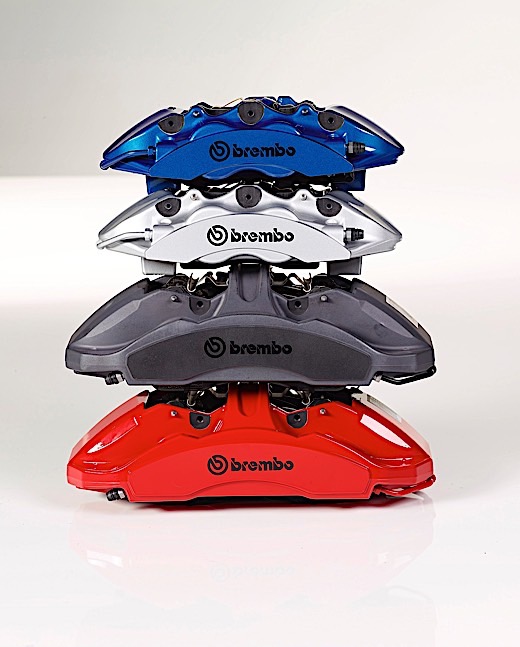
Brake jobs are a good source of parts and labor income for shops. When brakes wear out, most motorists just want you to fix the problem and restore their brakes to like-new condition with OE-equivalent replacement parts. But in some situations, there may be an opportunity to sell your customer on the benefits of upgrading certain brake components.
Nothing looks worse than a set of stock rusty rotors and calipers behind a set of expensive alloy wheels. The rear drum brakes on many imports are rather puny and certainly don’t do much to enhance a vehicle’s performance image.
The larger the rotors, the more brake torque they can generate when the brakes are applied. In the front, that’s a good feature to have. But in the rear, too much brake torque can upset the vehicle’s brake bias and cause the rear brakes to feel grabby and lockup prematurely. The fix is to either use a properly sized rear rotor, or to install an adjustable valve in the rear brake line(s) to reduce the pressure so the rear brakes don’t exert too much pressure when the brakes are applied.
As with rotors, upgrading the friction material is often a reasonable recommendation if not an outright requirement. Standard-grade pads may be fine for everyday driving, and usually deliver OE-equivalent stopping performance, fade resistance, pedal feel and wear characteristics. But for heavy-footed drivers or those who tend to eat brake pads, standard replacement pads may not be the best choice.
Premium pads are typically made with better materials. The backing plates may be plated to resist corrosion that can cause sticking and lining separation. The ingredients in the friction material are top of the line, and provide the best combination of wear, fade resistance, pedal feel and noise control. Consequently, they cost more — but for customers who want the best, upgrading to premium pads may well be worth the extra cost.
“Upgrading” may mean replacing the OE-style pads with ceramic pads. These are a good upgrade for many passenger car applications because they are typically quieter than semi-metallic pads, and generate much less dust than non-asbestos organic pads found on many BMW, Mercedes and other European makes. Some aftermarket ceramic pads are specially formulated to duplicate the performance and feel of OEM “Euro” linings without the dust issues.
Stopping is a safety concern, of course, but can also be a style issue. Today’s multi-piston calipers and performance brake components can give your customers the best of both worlds.
Article courtesy ImportCar.

